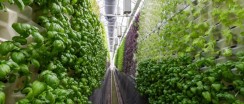As we become more aware of the impact of human activity on nature, we also become increasingly conscious of the measures we need to do to minimize or avert further damage to our environment. These measures and the lifestyle that promote them are often referred to as going green initiatives and sustainable living. Among the advocacies of environmentalists for going green is looking for sustainable power generation not only for businesses, offices, and public places but also for homes.
What is sustainable energy?
In essence, sustainable energy refers to energy that can be potentially harvested, stored, or harnessed for present needs without undermining its availability for the needs of future generations. The keyword here is sustainability, a concept which acknowledges the fact that our survival directly and indirectly depends on our natural environment, and therefore seeks to maintain the conditions that allow humans to harmoniously co-exist with each other at present and in the future. Sustainable energy is said to depend on two key components: energy efficiency and renewable energy.
Sustainable energy sources
While people constantly use the terms “sustainable energy” and “renewable energy” interchangeably, the former covers a much broader sense and the latter is a kind of energy harnessed through sustainable energy technologies. Such technologies and facilities include hydroelectric dams and power stations, solar energy panels and power stations, wind farms, and geothermal power stations.
However, research and tests are also ongoing for energy generation through tidal power, ethanol production, biofuels, and hydrogen energy. Among all these renewable energy sources, the most widely used and considered long-lived are hydroelectric plants, but solar energy plants and wind farms follow closely behind.
Powering homes with green energy
Much of the offices, businesses, and homes around world rely on non-renewable energy sources such as fossil fuels, which are not sustainable because the Earth will eventually run of its supply of these resources. With this in mind, scientists and engineers have been coming up with ways to improve the current technology for harvesting and harnessing renewable energy. The dream of many environmentalists and advocates of green living is for everyone to be able to equip their homes and work spaces with facilities that generate and use green and renewable energy.
At present, the technology and solutions for powering homes with green energy are mostly reliant on solar power for electricity generation and water heating. Solar panels or photovoltaic cells can be attached to roofing and laid out on open spaces, and a small-scale renewable energy system using this technology may even be incorporated on whole-designs for an energy-efficient home. Smaller versions of wind farm turbines are now also being made for home use, which are viable solutions for locations with good wind turbulence.
While the idea of being able to independently generate power for homes is a fascinating idea for many, it still requires a lot of research and major decision-making, including analyzing current electricity consumption, checking for local building codes, permits, and requirements, operating on or off the electric grid, and determining the available renewable energy technology in the area. The costs can also be steep for an ordinary household, as a complete setup often requires a sizable initial investment.
Are you looking to buy property in UK ? Hurghada , Scotland , Istanbul , Sahl Hasheesh , Dubai
Are you looking to rent property in UK ? London , Manchester , Reading , Leeds , Cardiff
Residential Property for sale in London , Apartment for sale in London , Bungalow for sale in London , House for sale in London , Land for sale in London , Retail for sale in London , Semi-detached house for sale in London , Duplex for sale in London








Author
Carol McDonald